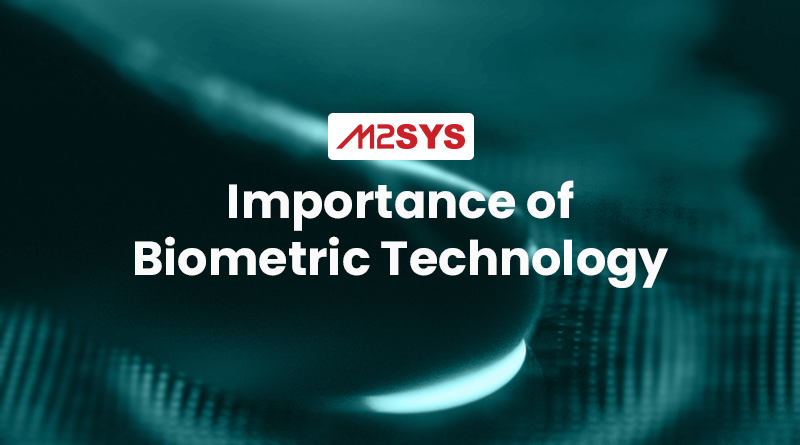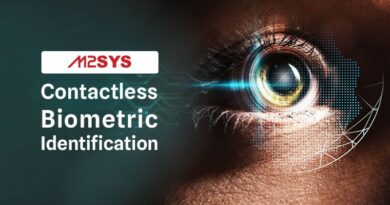Importance of Biometric Technology
The importance of biometrics in identification and access management cannot be overstated. This paper is a detailed analysis of biometric authentication mechanism, its uses, benefits, and challenges.
For a long time, businesses have employed passwords or ID cards to safeguard their data and assets. However, with increased processing rate and advanced cryptanalysis technology, password protection has become less effective. Consequently, a more secure authentication approach is necessary. Biometrics is one such approach.
Biometrics leverages human behavior and physical traits to identify a person. Several physical qualities may be used, but not all of them give the same degree of security for an organization’s resources. Similarly, not all scanning technologies are appropriate for all corporate situations.
In this post, we looked at each method of assessing biometric traits, the difficulties associated with each, and the importance of biometrics in identity management.
Why do we Need Biometrics?
For decades, corporations depended on passwords and ID cards to secure information resources. However, as outlined in the NIST password usage recommendation, advancement in cryptanalysis and processing speed have rendered passwords ineffective.
In response to the request for an upgrade in security systems, all linked authentication elements were classified into three groups.
- Type I – something you’re familiar with (passwords, pins, passphrases, etc.)
- Type II – something you own (identification cards, tokens, certificates, one-time password generators, etc.).
- Type III – something you are (biometrics: fingerprint, vein pattern, iris pattern, etc.)
Each category has its benefits and downsides, frequently resulting in greater than the tolerable risk for securing highly classified systems and data, making a combination of two or more factors necessary.
Biometrics is just one component, and has its own challenges. s As a result, it is rarely a silver bullet for authentication, frequently needing an extra factor; depending on the solution features and the risk you are attempting to reduce.
Practical Uses of Biometric Technology
Biometric systems have a wide range of applications. Biometrics may aid with transaction security, and also make living easier and safer. Biometric solutions are used to address the demands of the following domains:
Applications in law:
Justice and law enforcement: Biometric technology and law enforcement have a long history, and this beneficial partnership has resulted in several significant breakthroughs in identity management. Today, the biometrics utilized by the police force is genuinely multimodal. Fingerprint, face, and voice recognition all play important roles in boosting public safety and tracking down wanted persons.
Applications in the Government Sector
Border control and airports: One of the most important applications of biometric technology is at the border. Biometric technology aids in the automation of border crossing procedures. Reliable and automated passenger screening measures, as well as automated SAS, which eases international traveling, keep the borders safe, and boost the efficiency of government agencies.
Healthcare: Biometrics presents an improved paradigm in the healthcare sector. Medical records are among the most precious personal documents; physicians must have rapid access to them and they must be accurate. A lack of security and proper accounting may be the difference between a timely, accurate diagnosis and health fraud.
Commercial Enterprises
The wording of the above sentence is a little misleading. Fortunately, biometric technology is more widely available than ever, ready to provide protection and simplicity to anything that needs to be safeguarded, from a post station to an employee time clock.
Finance: Financial identification, verification, and authentication in commerce are among the most common uses of biometric technology, boosting the convenience and security of banking, shopping, and other transactional activities. In the financial sector, biometric solutions help to verify the identity of clients by comparing their biometric data to a model stored in a device or on a secure server. Today’s banking solutions and payment technologies employs a wide range of biometric modalities: fingerprints, iris, voice, face, fingerprint, palm veins, behavior, and other types of biometric recognition which can either be used independently or combined to form a fortified security system, as a deterrent to fraud.
Mobile: Mobile biometric solutions reside at the crossroads of connection and identification. They include one or more biometric keywords for authentication or identification and make use of smartphones, tablets, other forms of handhelds, wearable technologies, and the internet of things for flexible deployment. Mobile biometrics is becoming more essential as a result of the variety provided by current mobile technology, as well as the expansion of mobile paradigms in the consumer, public, and business sectors.
Final Thoughts
Biometrics may be an effective authentication method, but not every biometric modality is appropriate for every situation. Understand the area in which it will function, as well as the daily state of the physical features scanned, before picking a solution to prevent concerns such as fingers coated in oil or other things. You may need more than one solution, each tailored to its operational environment and the risk associated with the resources accessible.











